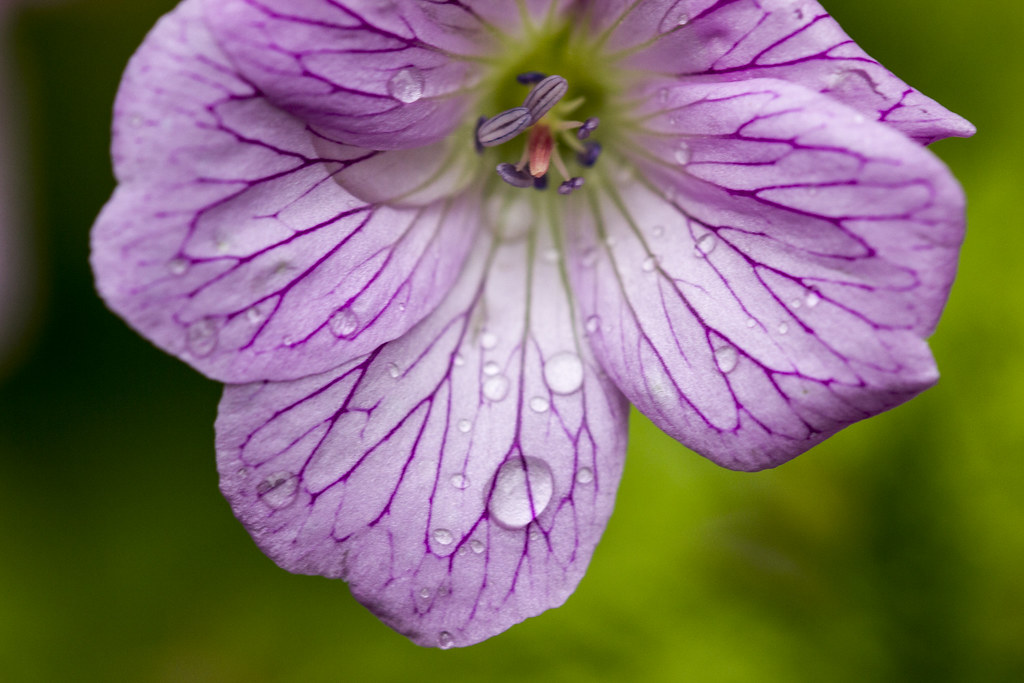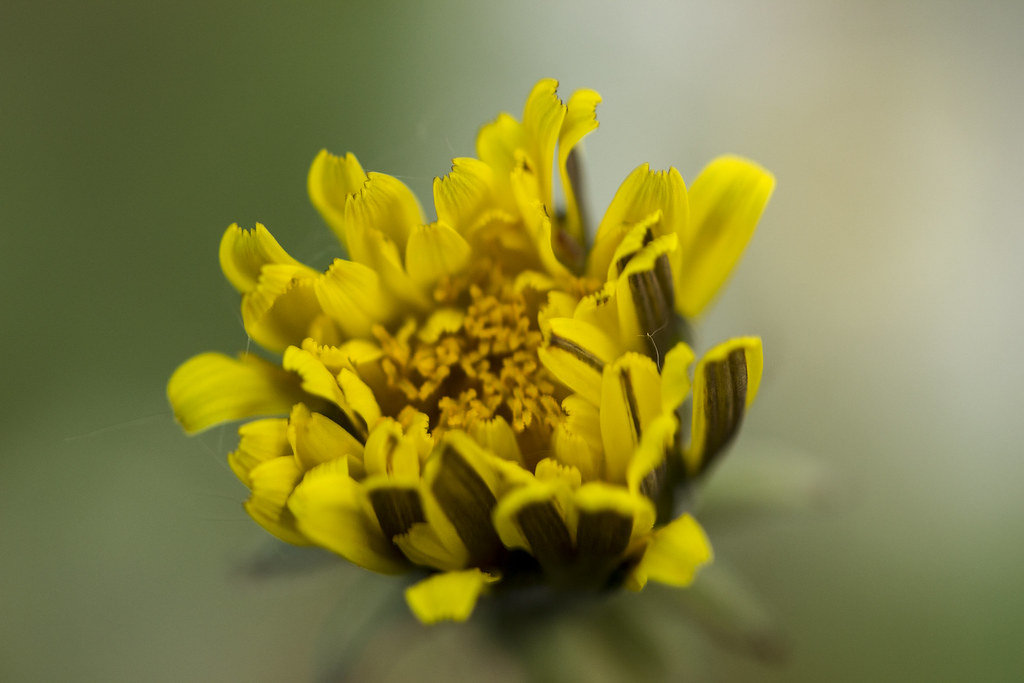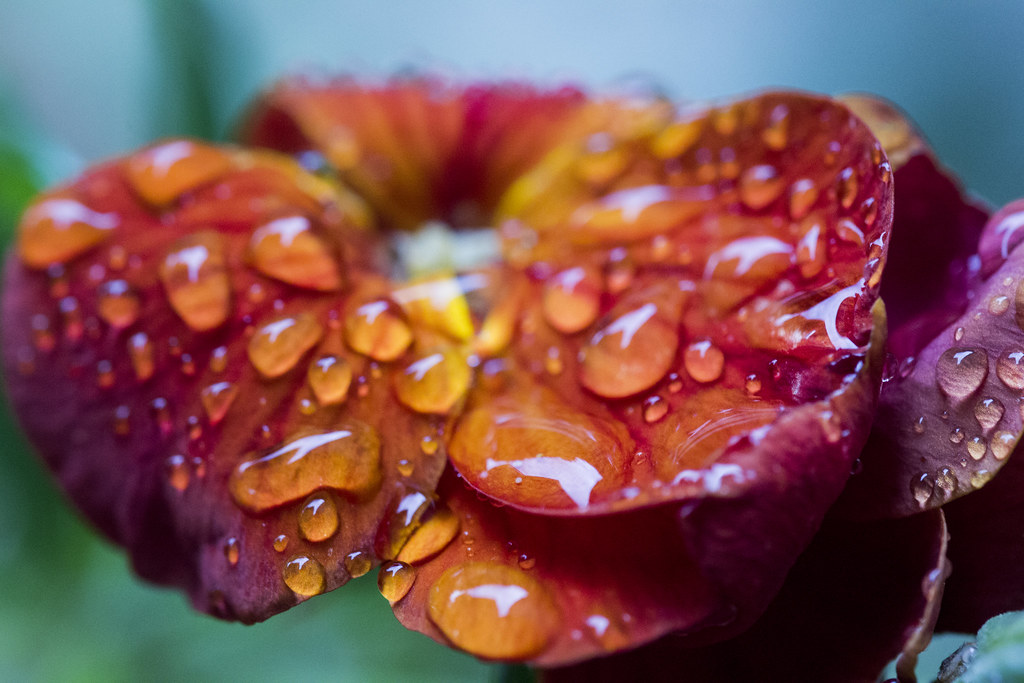There are (at least) three ways of getting good focus. You might want to try them all and see which works best for you. (FWIW I use all three, depending on the circumstances.)
Method 1. Autofocus. I suspect most people use manual focus and from numerous comments I've seen over several years I think many people under-rate the possibilities of autofocus. FWIW I use autofocus most of the time for invertebrates. I often use autofocus for flowers. Whether autofocus works for you may depend on what equipment you use. I have some equipment for which autofocus works really well, and some for which it doesn't. (It doesn't matter exactly what I use and what of it works with autofocus and what doesn't, because none of it is comparable to the equipment you are using.)
Method 2. Manual focus using the focus ring. I don't use this great deal, but when I do I'm usually using a tripod in the "classic" manner (see below).
Method 3. Rocking manual focus. You leave the focus ring alone and you move to where the subject is more or less in focus. You then move very gently towards and away from the subject and watch as it goes in and out of focus, and you get a feel for what it looks like just before it comes into focus. You then time your press of the shutter button to be just before the subject is fully in focus with the aim of capturing the shot just as the subject is passing through the point of best focus. This is a very popular method I believe. It takes practice. Expect an extremely high failure rate initially, but don't get put off by that. Once you get the hang of it this can give excellent results.
I have a focus ring [EDIT no I don't, I have a focus rail!] on my tripod with a knob that lets me move the camera towards and away from the subject with very fine control. I use a version of rocking manual focus with this.
I use a tripod in two different ways. One is what I call the "classic" tripod technique. You set up the shot, take your hands away, give the rig time to settle down and then use a wired or wireless remote shutter release (or less satisfactory IMO the camera's self timer) to capture the image. You really need still air and a subject that isn't liable to nip off at any second for this to work well, especially if you are using the camera's self timer rather than a remote release. I use this when I can, but that isn't very often, and is mainly very early in the morning, when the air tends to be at its most still (but only on some days - I watch the weather forecasts rather carefully and am out at dawn on suitable days to try to capture "still air" shots).
More usually I use a tripod like some people use a monopod, or a pole or stick, in what I call a "tripod assisted" approach. Depending on where the subject is, the tripod may have three, two or one leg on the ground. I keep my hands on the camera and the tripod cuts down a lot of the movement from hand shake. This lets me use slower shutter speeds than would otherwise be the case. It also helps with initially composing the picture and then holding that composition while I take multiple shots to try to get one that works nicely. I use this technique for invertebrates and flowers. With invertebrates you can respond quickly to slight movements that animal subjects may make, and also respond to movement of flowers, leaves etc. It's not so much a case of trying to track a leaf as it moves, but of changing the composition slightly when the breeze leaves the subject, or what it is standing on, in a slightly different position after it has been blown around.
Like I imagine everyone else who is into closeups, I have a high failure rate. I very, very occasionally go above 10% keepers, and usually it is more like 5%, and it can be lower, sometimes a lot lower. And in terms of keepers, I often end up with a run of shots of a particular subject where most of them work out ok, but because they are so similar they only provide one keeper, or a few very similar ones, As a result, in terms of images that are significantly different from one another, much less than 5% is typical for me, and most of these will be ok but not wonderful. Out of 1,000 or more images that I capture during a 5-7 hour session at a nature reserve, or in our garden, I might if I'm lucky get two or three that I rather like, that stand out in some way. Often it is none. Once every few sessions (or once every not so few sessions), I get a result (which may be one or several images) that really appeals to me and goes into my longer term "favourites" and that I trot out from time to time for various reasons.
What with movement in the breeze (and associated changing light if the scene is illuminated through foliage), and the unpredictable movement of invertebrate subjects as they go about their lives, success with closeups is for me at least a numbers game, where I capture lots of images and try to peer through the fog of randomness to happen upon occasional moments of clarity when everything falls into place just as I press the shutter button. This is especially true if like me you prefer to use natural light rather than flash. I do use flash, especially with invertebrates (but almost never with flowers) and this lets you "freeze the moment", irrespective of breeze, hand shake, subject movement etc, and lets you use low ISOs (for less noise) and fast shutter speeds (for better sharpness) even if you use smaller apertures (for more depth of field). But a preference for natural light, and deep depth of field, coupled with living in a breezy location, and shooting in conditions of poor light around dawn, dusk and on overcast days, gets me deeper into the numbers game and also the consequences for post processing of dealing with images that are noisy and less sharp and detailed.
You can learn from the misses and almost rans, but don't let them get you down. Learn and move on. And be patient. There are some people here who are developing at a stunning speed, and it is a joy to see, but there are others (like me for example), who are a bit on the slow side when it comes to new things. So don't despair if you can't match the speed of the fastest. It's not a race; it's a journey. Take whatever time you need, and enjoy it!









